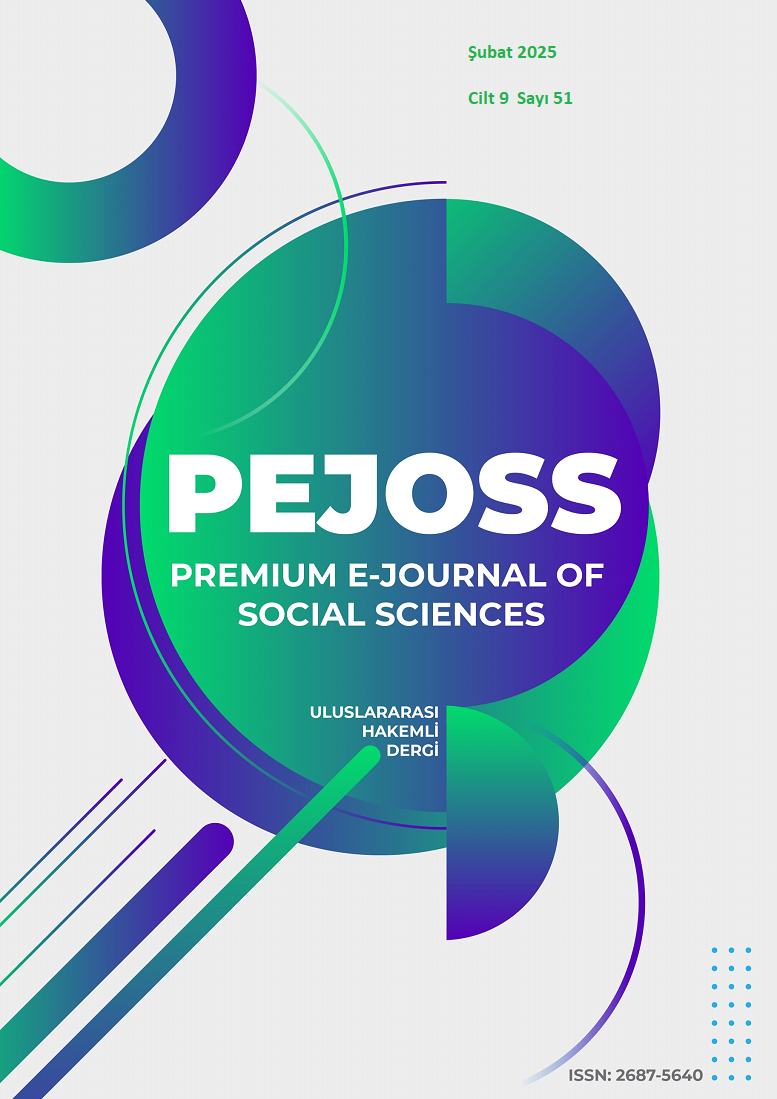Svastika Motif from Past to Present
DOI:
https://doi.org/10.5281/zenodo.14643530Keywords:
Svastika, Motif, Symbol.Abstract
Throughout human history, symbols have been one of the most effective means of communication of thoughts and emotions. This visual language has become a universal expression of the human experience, taking on different meanings in different cultures and periods. This study will examine how symbols reflect a cultural, religious and social identity and how they have transformed in the historical process, particularly through the symbol of the svastika. In this study, the svastika symbol, which has a long history dating back to BC, is analyzed in a historical perspective. It is seen that this symbol, which symbolizes good luck and good fortune in various civilizations, has different meanings and areas of use in different cultures. This study, supported by a literature review, focuses on the evolution of the svastika in the historical process and the diversity of its symbolic meaning.
This research, which examines the svastika motif in Anatolian and Islamic culture, reveals once again that symbols are not only visual expressions, but also the memory, beliefs and values of societies. As in the case of the svastika, the meaning of a symbol is more accurately understood when it is evaluated within its cultural and historical context. This study shows that decoding the universal language of symbols can help us understand the past, as well as the complex nature of this visual language that continues to shape our cultural identities and beliefs today. While emphasizing the importance of symbols in human history, this study shows how a symbol can also reflect a cultural, religious and social identity, as in the case of the svastika. Deciphering the universal language of symbols will not only help us understand the past, but also better grasp the complex nature of this visual language that continues to shape our cultural identities and beliefs today. The svastika motif in Anatolian and Islamic culture was researched and 3 weaving examples were found. The study was completed by supporting it with visuals.
Downloads
References
Avşar, L. (2010). Antik Yunan seramiklerindeki haç ve çarkıfelek simgeleri ve bunların Avrasya, Anadolu ve Mezopotamya kültürlerindeki muhtemel kaynakları. Mukaddime, 3, 115–141.
Bayraktaroğlu, S. (2016). Kıbrıs vakıflar idaresinde bulunan iki Osmanlı kilimi. Vakıflar Dergisi, 46:135-144.
Çoruhlu, Y. (2007). Erken devir Türk sanatı (1. Baskı). Kabalcı Yayınevi.
Daş, E. (2018). 1. Uluslararası Türk-İslam Mezar Taşları Kongresi Bildiriler Kitabı. Muvaffak Duranlı (Ed.), Mezar taşlarında svastika ve çarkıfelek sembollerinin kökeni ve anlamı içinde (s.199-206). Adnan Menderes Üniversitesi Yayınları.
Diyanet İşleri Başkanlığı (2010). Kur’an-ı Kerim meali. Diyanet İşleri Başkanlığı Yayınları.
Eberhard, W. (2000). Çin simgeleri sözlüğü. Kabalcı Yayınları.
Erbek, M. (2002). Çatalhöyükten günümüze Anadolu motifleri. Kültür Bakanlığı Yayınları.
Karamağaralı, B. (1997). Türk halı sanatındaki motiflerin yorumu üzerine. Arış, 3, 28-39.
Kardeşlik, S. (2011). Vakıflar Halı Müzesi’nde Selçuklu ve Selçuklu geleneğindeki halılarda kozmonolojik ve ikonografik boyut. Restorasyon Yıllığı Dergisi, 2, 73-90.
Mülayim, S. (1999). Değişimin tanıkları Ortaçağ Türk sanatında süsleme ve ikonografi. Kaknüs Yayınları.
Schimmel, A. (2004). Tanrının yeryüzündeki işaretleri. Kabalcı Yayınları.
Tarcan, H. (2003). Tarihin başladığı ön-Türk uygarlığı resmi tarihin çöküşü. Eczacıbaşı Sanat Ansiklopedisi.
Türkçe Sözlük (1988). TDK 1-2 Cilt A-J K-Z (Türk Dil Kurumu), Ankara.
İnternet Kaynakları
Dünyalılar (t.y.). Svastika sembolü. https://dunyalilar.org
Encyclopedia (t.y.). Svastika tarihi. https://encyclopedia.ushmm.org
Fosmaca (t.y.). Svastika sembolü. https://fosmanca.art/
Downloads
Published
How to Cite
Issue
Section
License
Copyright (c) 2025 Premium e-Journal of Social Science (PEJOSS)

This work is licensed under a Creative Commons Attribution 4.0 International License.


